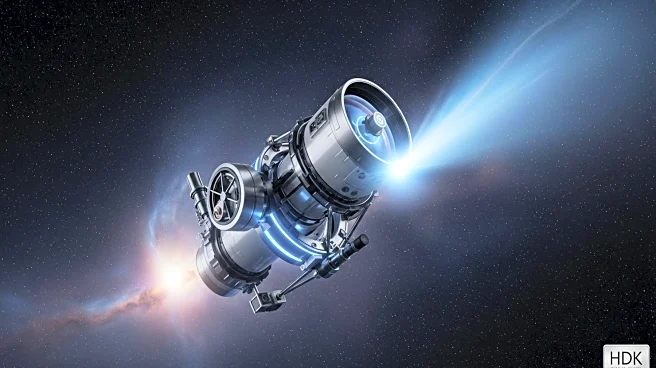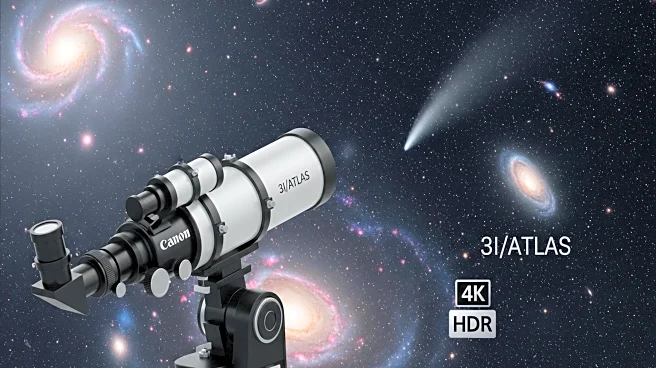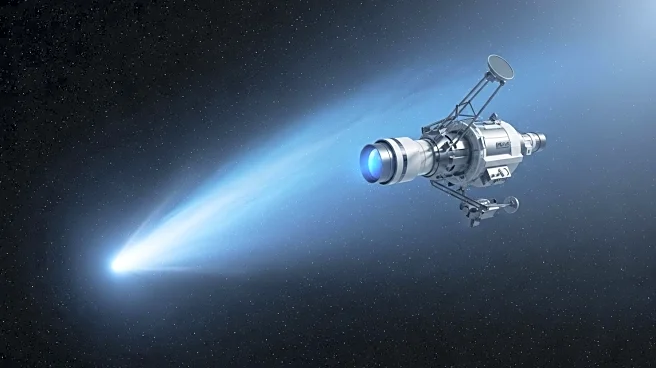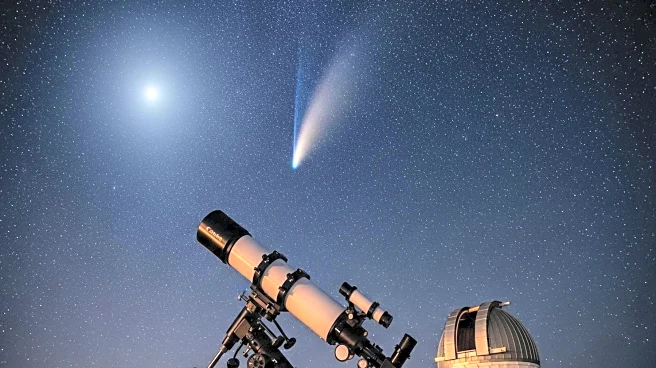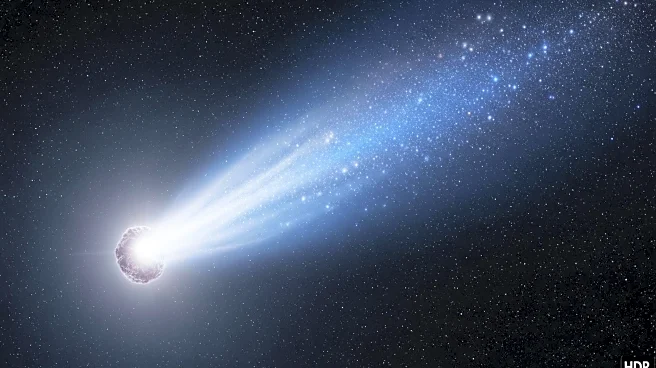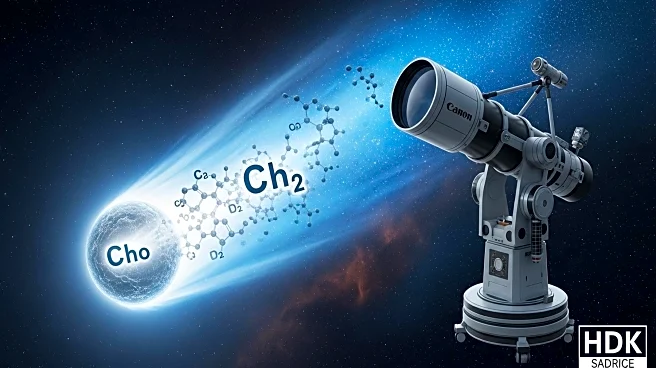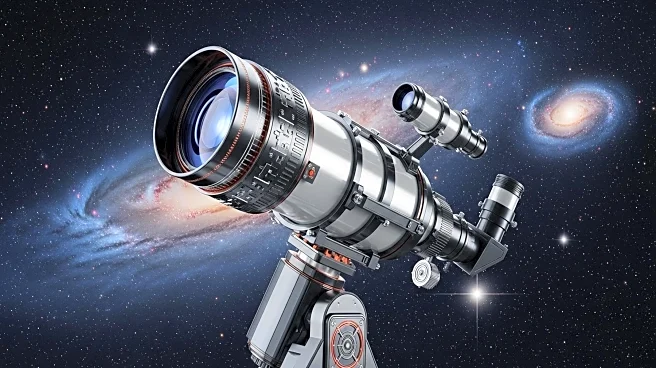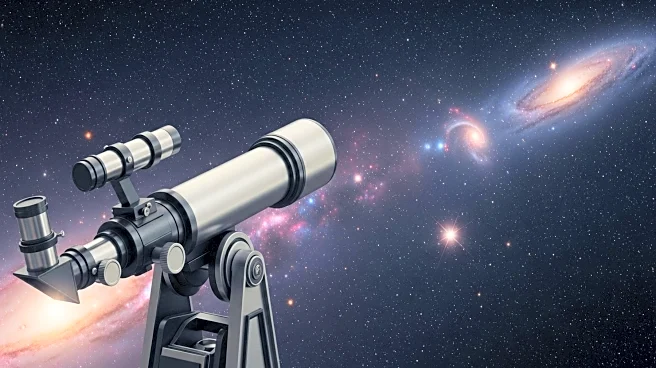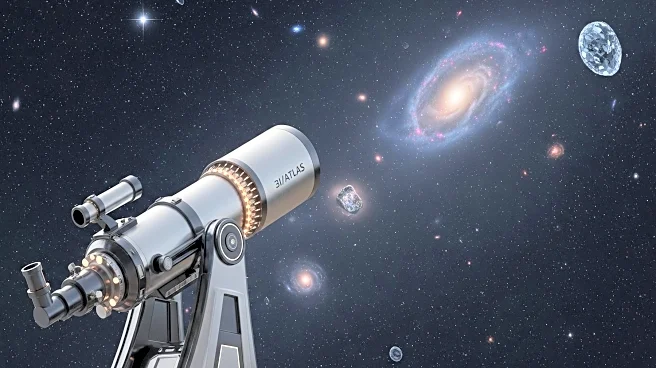What's Happening?
NASA's James Webb Space Telescope has observed the interstellar comet 3I/ATLAS using its Near-Infrared Spectrograph instrument on August 6. The data collected is being analyzed, with a preprint available online. Webb, along with other NASA telescopes like Hubble and SPHEREx, is providing detailed information about the comet's size, physical properties, and chemical makeup. The comet poses no threat to Earth, but its study is part of NASA's mission to better understand solar system objects.
Why It's Important?
The observation of comet 3I/ATLAS by the Webb Telescope is crucial for understanding the characteristics of interstellar objects. This research can provide valuable insights into the formation and evolution of the solar system. By studying the comet's composition, scientists can learn more about the materials present in the early solar system and the processes that led to the formation of planets and other celestial bodies. The collaboration between different telescopes highlights the importance of comprehensive data collection in advancing scientific knowledge.
What's Next?
Further analysis of the data collected by the Webb Telescope will likely lead to new discoveries about the comet's structure and composition. This research may inform future missions aimed at studying interstellar objects and contribute to the development of new technologies for space exploration. The findings could also enhance our understanding of the solar system's history and the role of comets in its evolution.


